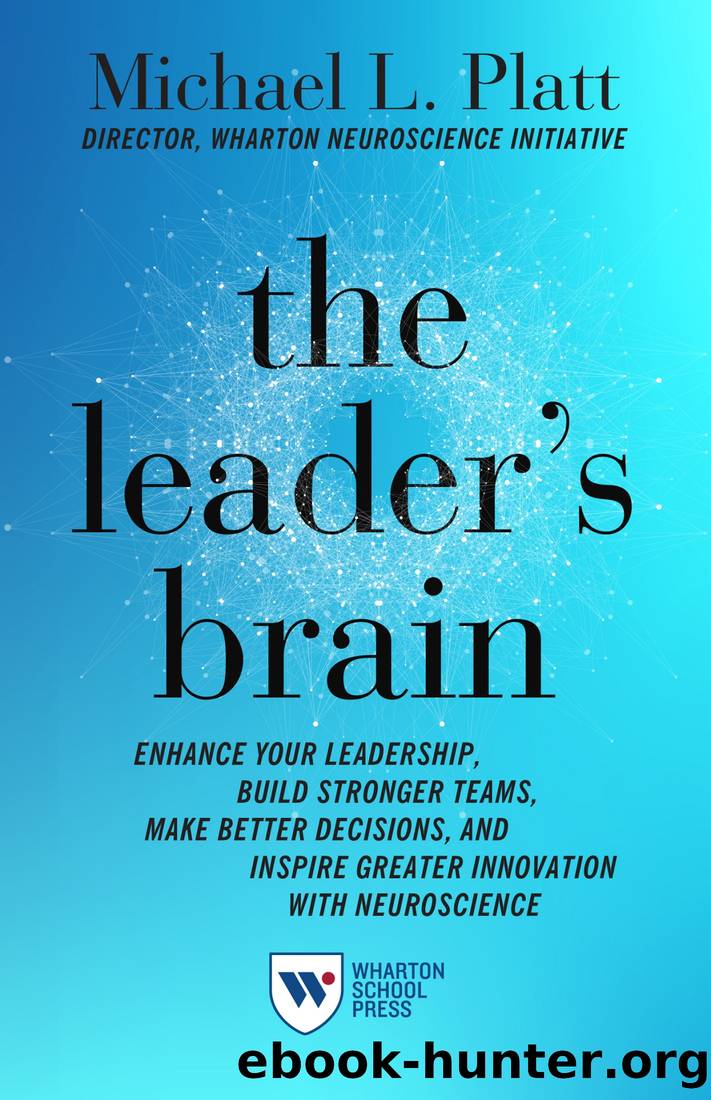The Leader's Brain by Michael Platt

Author:Michael Platt [Platt, Michael]
Language: eng
Format: epub
Publisher: Wharton School Press
Option Fatigue and the Paradox of Choice
Think about the last time you needed to hire someone. How many applicants did you interview? How many did you screen, possibly using applicant tracking software? Recruiting and hiring consultants report that only about 2% of applicants receive job offers.134 Hiring is one of the most important decisions a business leader has to make, yet it is also one of the most difficultâand one of the most expensive. One reason that making a good hiring decision is so challenging now is the sheer volume of applications that are submitted electronically.
Why does having more options make it more difficult to make a decision? After all, economists assert that having more options makes people happier and more satisfied because they are more likely to find the itemâin this case, the job prospectâthey really want. In reality, though, we experience what is often called a paradox of choice or option fatigue. This is a big problem whether youâre a leader who wants to make good hiring decisions, a retailer who wants to encourage consumers to buy products, or a home buyer searching for a new house on Zillow.
The paradox of choice was first studied experimentally about 20 years ago. Sheena Iyengar of Columbia University and Mark Lepper of Stanford conducted research at Draegerâs Supermarket, an upscale retailer in Menlo Park, California.135 The store was chosen because of the incredible variety it offers its shoppers, including 250 kinds of mustard, 300 kinds of jam, and 75 types of olive oil. It also frequently sets up tasting booths, so customers are used to being able to sample some of these options.
One day, Iyengar and Lepper set up a display table with 24 different kinds of Wilkin & Sons jam. Then another day, they offered six different types of jam. They found that while the larger display generated more interest, it led to significantly fewer sales (3% vs. 30%) than the six-jam display. The conclusion? Too much choice is âdemotivating.â
The study has been repeated with other food items, prescription drug plans in Medicare Part D, and even mutual fund options in retirement savings plans. Iyengar found in this last study, remarkably, that when too many mutual fund options are offered, fewer people participate in the savings planâeven though it means forfeiting the money their employers would contribute (in essence, free money!).
But a few years after these results were published, new research seemed to provide more nuance to the paradox of choice. More than one study has concluded that, especially in a domain well known to the decider, more choices are preferable.136 The debate might have gone on indefinitely if not for neuroscience research. To start, letâs look at a study led by Colin Camerer at the California Institute of Technology in Pasadena.137
Participants were shown pictures of landscapes and asked to choose one out of a set of 6, 12, or 24 to personalize a mug or other item. While they were deciding, their brains were scanned with fMRI, which showed
Download
This site does not store any files on its server. We only index and link to content provided by other sites. Please contact the content providers to delete copyright contents if any and email us, we'll remove relevant links or contents immediately.
Tools of Titans by Timothy Ferriss(7932)
Change Your Questions, Change Your Life by Marilee Adams(7450)
Deep Work by Cal Newport(6670)
Man-made Catastrophes and Risk Information Concealment by Dmitry Chernov & Didier Sornette(5737)
Playing to Win_ How Strategy Really Works by A.G. Lafley & Roger L. Martin(5630)
Digital Minimalism by Cal Newport;(5459)
Big Magic: Creative Living Beyond Fear by Elizabeth Gilbert(5425)
The Slight Edge by Jeff Olson(5239)
Ego Is the Enemy by Ryan Holiday(5047)
The Motivation Myth by Jeff Haden(5046)
Stone's Rules by Roger Stone(4911)
The Laws of Human Nature by Robert Greene(4843)
Tuesdays with Morrie by Mitch Albom(4471)
Rising Strong by Brene Brown(4243)
Eat That Frog! by Brian Tracy(4230)
Skin in the Game by Nassim Nicholas Taleb(4032)
The Money Culture by Michael Lewis(3917)
Bullshit Jobs by David Graeber(3896)
Skin in the Game: Hidden Asymmetries in Daily Life by Nassim Nicholas Taleb(3784)
